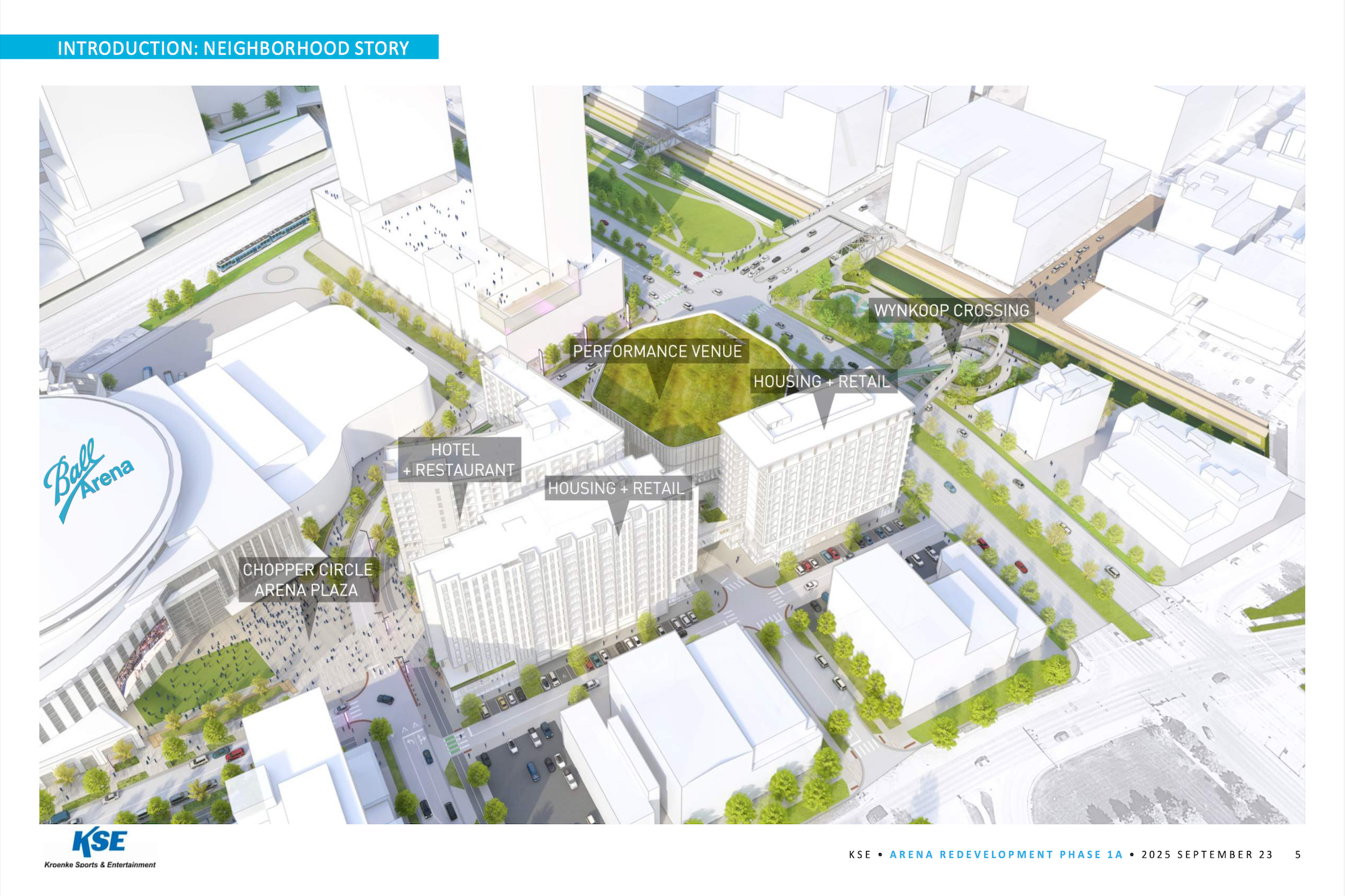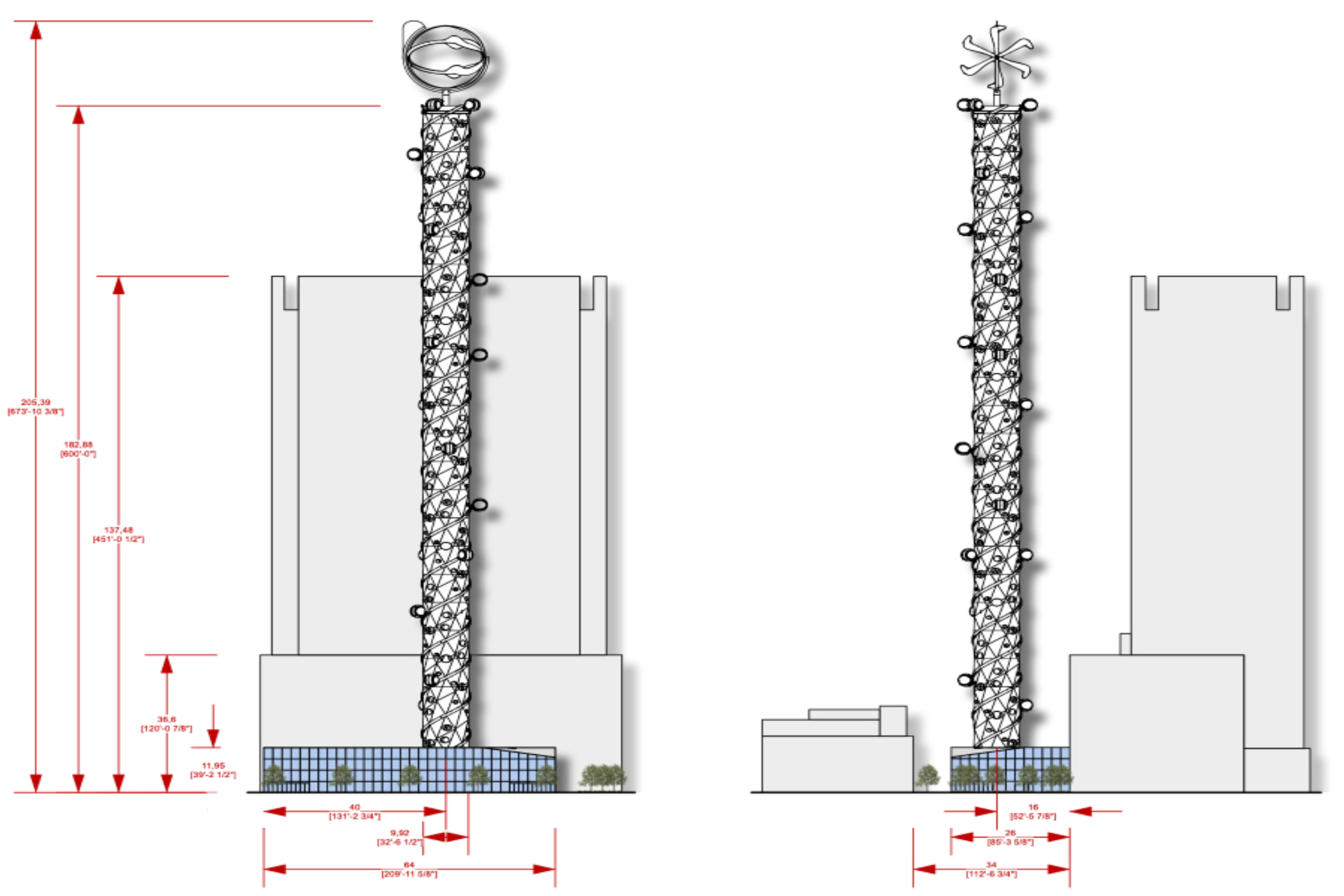Let’s end the week by visiting another project that has finally made it out of the ground: The 16th & Wewatta Hotel / Office Complex. This project consists of a 12-story, 200-room hotel and a 5-story, 53,000 square foot office building. Originally, the hotel was branded as a Kimpton but that has changed to Hotel Born.
Work has commenced on the first level above ground! Here is a site photo and a street level view.
Looking straight down the commuter rail canopy is a view that will never get old. As this project climbs, this view will be forever changed.
Now that this project is above ground, we will start to see how the hotel and office building interact with each other at the end of the commuter rail canopy. Have a great weekend DenverInfill readers!














And until this building is knocked down, intercity rail can never leave Union Station going south. Lack of long-term thinking. :sigh:
Because there’s all sorts of plans for thru-line service going South….
Asides, the most cost-effective thru-line option would be a platform adjacent to the CML.
I hear this argument constantly, but nobody can ever explain why a train line couldn’t simply come up the CML, and then curve around the Prospect neighborhood to join the other lines coming into Union Station from the north.
The REAL problem with getting rail service to the south isn’t a lack of through tracks, but rather the fact that it will almost certainly require the acquisition and decommissioning of at least part of – if not all of – the CML freight tracks themselves. This ROW would be needed not only behind the current Union Station light-rail platforms, but also through the Pepsi Center area and continuing south. It isn’t necessarily always possible to obtain a parallel ROW by going after adjacent properties instead of using the freight corridor (as was done on the new Airport line).
I think there is a perception that freight ROW wouldn’t be needed south of Speer Boulevard because of the sea of parking/open land at the Pepsi Center – and that the main impediment to going south are the newly constructed buildings between Speer and the station platforms. I wouldn’t be so sure about this assumption. There is no guarantee that this land would still be available at the time of construction. And even if the land were available, there would likely still be significant impacts to the freight lines south of Auraria parkway. I have always assumed that a train to the south would actually require decommissioning the entire CML itself (or else perhaps, possibly, tunneling)… obviously a VERY costly and difficult endeavor no matter what.
A tunnel could simply go beneath all affected infrastructure, whereas any buyout of the freight alignment would likely include that same ROW all the way north to Park Avenue – where the tracks tie-in to other freight corridors, as well as to the electric commuter lines headed in and out of Union Station. Any modern electric train should be capable of going multiple directions. Many major European train stations are stub-end stations where trains simply switch directions after making a stop.
I should amend my comment to say that I AGREE there was a lack of foresight that has lead to the dilemma I discuss above. When the CPV rail yards were originally reclaimed and turned in to the Pepsi Center/Elitch’s/Riverfront Park/Union Station Neighborhood, it would have been nice if they had not constricted the CML right-of-way as much as they did. Simply leaving room for a few more parallel train tracks would have ensured that new passenger service could have been added over time without impacting freight trains.
But even if this foresight had gone into the process, my basic statement still stands that a train can just as easily (and with negligible time loss) curve around and approach the station from the north in the absence of a southern approach. Even old fashioned Amtrak trains can negotiate a stub-end station, and modern electric passenger trains can do this even more easily.
I think city planners looked south and saw cities like Lone Tree, Castle Rock, Monument, and Colorado Springs — municipalities who have a hard enough time approving simple bus routes, let alone rail infrastructure — and just said ‘screw it.’
It’s difficult imagining anything ever getting built south of Denver Metro. The voting constituencies abhor any legislation that doesn’t directly serve their own selfish interests.
That’s a fair point. Still though… there are other things to consider. Like the possibility of using 285 instead of I70 as a route for a potential mountain train, which could use Hampden and then approach downtown from the south. Or just generally keeping the city’s options open for other possibilities, or in case conditions change in the future. I don’t know exactly how the urban renewal process worked for the whole area, but since they were basically planning a new urban area from scratch, it would have been nice if they could have given the CML another 50′ or so of ROW. Oh well… guess they’ll just have to do that eastern re-route of the main line freight tracks at massive cost if they ever want to use that ROW! Or else maybe tunnel.
On a happier note, I’m looking very forward to this project being finished!
I don’t see Colorado Springs residents voting for a tax increase to pay for a train to Denver.